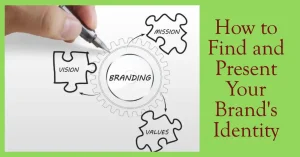First Off
A game-changer in today’s fast-changing technology world is the Internet of Things (IoT). This linked gadgets and sensors network has permeated many areas of our lives and businesses, revolutionizing how we work and live. This article explores the many uses of IoT and illustrates how it’s changing the world.
Recognising IoT
IoT: What is it?
Before delving into its uses, let’s clarify what IoT is. The Internet of Things (IoT) is a network of physically connected items, including buildings, cars, and other vehicles, integrated with sensors, software, and network connectivity. These gadgets can build an extensive network of interconnected, sentient beings by gathering and exchanging data.
IoT in Medical
Remote Patient Surveillance
Because IoT makes remote patient monitoring possible, healthcare is being revolutionized. Smart devices that monitor vital signs and transmit data in real-time to healthcare providers can be worn by patients. This lowers hospitalization rates and enables prompt action.
Smart Healthcare Equipment
Patient care is improved by creating intelligent medical devices with IoT capabilities, such as pacemakers and insulin pumps. By modifying settings according to the patient’s condition, these devices can enhance the patient’s quality of life.
Agriculture and Precision Farming with IoT
IoT helps agriculture by enabling precise farming. Field sensors gather information on temperature, moisture content of the soil, and crop health, allowing the farmers to make informed decisions and maximize agricultural production.
Observing Livestock
Farmers can use IoT to keep an eye on the whereabouts and health of their cattle. This improves agricultural productivity while guaranteeing the welfare of the animals.
In Smart Cities, IoT
Traffic Control
Intelligent cities use IoT to control traffic effectively. Traffic lights and road sensors gather data to maximize travel times, lessen traffic, and improve traffic flow.
Waste Management: The Internet of Things allows the implementation of intelligent waste management systems, which minimize operating costs and optimize waste collection routes by alerting authorities when bins are full.
IoT in Predictive Maintenance in Manufacturing
IoT makes it possible for manufacturing to maintain machines predictively. Sensors identify irregularities and wear on machinery, enabling prompt maintenance to avoid malfunctions and downtime.
Supply Chain Enhancement
IoT improves supply chain management by enabling real-time tracking of items while they are being transported. This lowers losses and enhances inventory control.
Smart Homes and IoT
The Internet of Things has enabled the creation of intelligent houses. Homeowners can improve convenience and security by controlling their surroundings remotely with intelligent security systems, lights, and thermostats.
Energy Reduction
Homes can monitor and reduce energy use with smart meters and Internet of Things (IoT)-connected appliances, which can save money and benefit the environment.
Monitoring the Environment with IoT
Air Quality Monitoring: Air quality is tracked using Internet of Things sensors in cities. Both public health and pollution control programs benefit from this data.
Conservation of Wildlife
Researchers use IoT devices to monitor and safeguard endangered species. Animals wearing GPS-enabled collars can obtain important information about their habitat and behavior.
Education and IoT: Smart Classrooms
Intelligent classrooms are one way that IoT is advancing education. These classrooms have interactive whiteboards and other IoT-enabled tools that improve the educational process.
Student Monitoring
Institutions can monitor student movements and attendance on campus with the help of IoT. By using this data, campus resources are maximized, and student safety is ensured.
Retail Inventory Management with IoT
IoT helps retail enterprises streamline inventory management; real-time stock level tracking via RFID tags and sensors keeps retailers from overstocking or experiencing stockouts.
Consumer Perspective
Personalized shopping experiences are one way that IoT improves the consumer experience. While a customer is shopping, customized promotions can be sent to their smartphone via beacon technology.
In summary
Applications of IoT are numerous and diverse, affecting almost every facet of our lives and businesses. The Internet of Things (IoT) is changing how we live and work by bringing efficiency, connectivity, and data-drivenness to industries, including manufacturing, smart cities, and healthcare.
Q&As
How can IoT help the medical field?
The Internet of Things (IoT) improves patient care and lowers hospitalization rates by enabling remote patient monitoring and upgrading the functioning of intelligent medical devices.
How may agriculture be optimized via IoT?
Precision farming, in which sensors gather information on crop and soil conditions to enable farmers to make more informed decisions for higher yields, is one way the IoT optimizes agriculture.
How is the Internet of Things used in smart cities?
IoT is essential to smart cities because it enhances waste collection, traffic control, and general urban efficiency, which benefits citizens’ quality of life.
How is manufacturing affected by IoT?
IoT impacts production by making predictive maintenance possible, streamlining the supply chain, cutting downtime, and boosting productivity.
How can homes profit from IoT?
IoT helps homeowners by lowering energy bills, improving convenience, and offering home automation and energy efficiency solutions.




